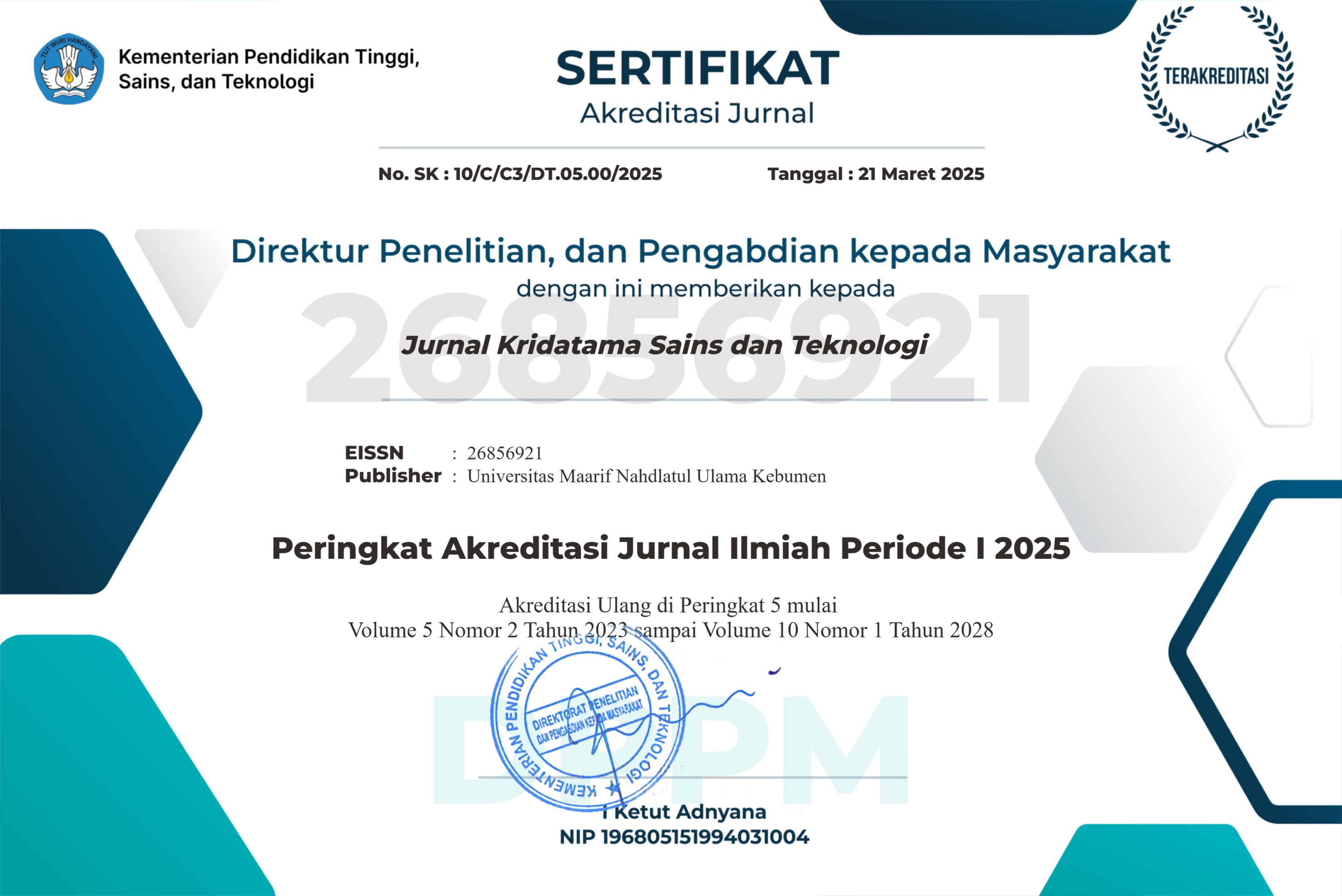Perawatan Sampel Beton dengan Membran Pengering dan Air Pengering Mempengaruhi Kekuatan Tekan Beton di Lab. KAK Kebumen
DOI:
https://doi.org/10.53863/kst.v7i01.1586Keywords:
Compressive strength, concrete, membrane curing, water curingAbstract
The problem that occurs in fresh concrete is the imperfect cement hydration process due to too rapid water loss. This can cause the concrete to become weak, cracked, and not reach the desired compressive strength. The cement hydration process requires sufficient water to react with the cement and form a strong concrete structure. However, if water is lost too quickly due to evaporation, the hydration process cannot take place perfectly. Realizing this problem, we conducted a research experiment to find, compare, and evaluate the effect of various curing techniques on the compressive strength of concrete. The planned concrete quality of 18.68 Mpa was made from a cylinder with a diameter of 15 cm and a height of 30 cm as many as 10 samples. After curing, the concrete was tested twice: soaked in water at 10.19 MPa and 16.98 MPa; doused with water at 11.04 MPa and 11.32 MPa; and wrapped in wet burlap sacks at 8.49 MPa and 10.75 MPa. Treatment wrapped with plastic wrap showed results of 3.96 MPa and 15.28 MPa, while without treatment at outside temperature was 10.47 MPa and 11.32 MPa. The results showed that there was a significant difference in the compressive strength of concrete as measured by the compressive strength of concrete soaked in water for 28 days with treatments of 7 and 28 days respectively. Treatment by soaking in water showed an increase of 54.55% and 90.89%, treatment by sprinkling water increased by 59.10% and 60.59%, treatment by wrapping using wet burlap showed an increase of 45.44% and 57.54%, treatment with plastic wrap increased by 21.19% and 81.79%, while without outdoor treatment had an increase of 56.04% and 60.59%. The results showed that concrete soaked in water for 28 days produced the best compressive strength
References
Asiacon. 2019. Pengertian Dan Fungsi Curing Beton. Diakses pada 25 februari 2021.
Muhammad Husni Malik Hasibuan, P.2019. Pengaruh Cara Dan Lama Perawatan Terhadap Kuat Tekan Beton.
Niagareadymix. 2020. 6 Cara Perawatan Beton Setelah Cor Yang Harus Diketahui. Diakses pada 25 februari 2021
PT. Aneka Dharma Persada 2025, Tentang Cara Menjaga Beton Agar Tetap Optimal
PT. Tetrasa Geosinindo 2022, Tentang Curing Beton: Pengertian, Fungsi, dan Metodenya
SK SNI S-04-1989-F, Tentang Spesifikasi Bahan Bangunan Bagian A (Bahan Bangunan Bukan Logam).
SNI 03 – 2843 – 2000, Tentang Tata Cara Pembuatan Rencana Campuran Beton Normal.
SNI 03-2847-2002. (n.d.). Tata Cara Perhitungan Struktur Beton Untuk Bangunan Gedung (Beta Version). Statistics, W. S. (2023). STATISTIK.
SNI 03 – 2847 – 2013, Tentang Tata Cara Perencanaan Struktur Beton Untuk Bangunan Gedung.
SNI 03 – 6369 – 2000, Tentang Tata Cara Pembuatan Kaping Untuk Benda Uji Silinder Beton.
SNI 1974: 2011, Tentang Cara Uji Kuat Tekan Beton Dengan Benda Uji Silinder.
SNI 2493: 2011, Tata Cara Pembuatan Dan Perawatan Benda Uji Beton Di Laboratorium.
Suharto. 207, Pengertian perawatan (curing). Semarang Jawa Tengah: Biro Penerbit Teknik Sipil Universitas Islam Sultan Agung.
Tjokrodimuljo, Kardiyono. 1996. Teknologi Beton. Yogyakarta: Biro Penerbit Teknik Sipil Universitas Gadjah Mada.
Vicky Fernando1, Elia Hunggurami2, Tri M. W. Sir3, P.2023. Pengaruh Perawatan Beton (Curing) Menggunakan Water Curing dan Membrane Curing Terhadap Kuat Tekan Beton
Downloads
Published
How to Cite
Issue
Section
License
Copyright (c) 2025 Haris Tri Aryadi; Dyah Widi Astin Intansari

This work is licensed under a Creative Commons Attribution-ShareAlike 4.0 International License.
Authors retain copyright and grant the journal right of first publication with the work simultaneously licensed under a Creative Commons Attribution-ShareAlike 4.0 International License that allows others to share the work with an acknowledgment of the work’s authorship and initial publication in this journal

















